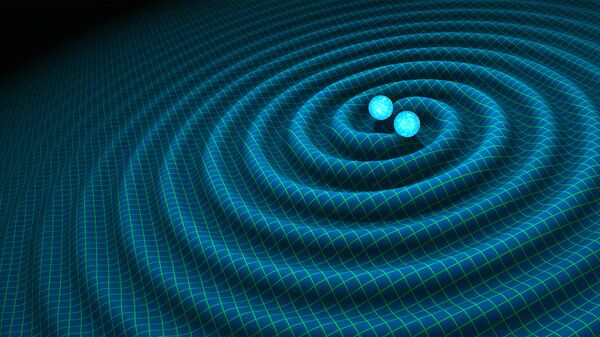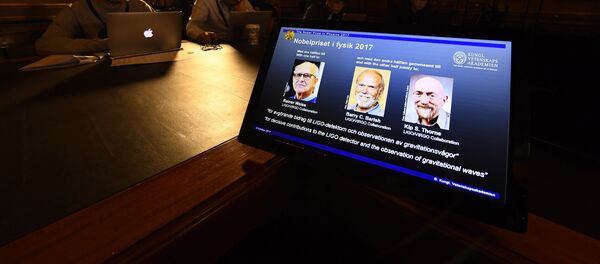"I was overwhelmed by this, even though it was expected," Thorne said, speaking to Radio Sputnik by telephone on Tuesday.
"I was also a little disappointed, because the success of LIGO in discovering gravitational waves, the success in creating a whole new way of doing astronomy is the result of the collaborative efforts of more than a thousand scientists and engineers. Among those, there are perhaps a hundred that were absolutely crucial; this could not really have happened without them," the theoretical physicist humbly added.
Thorne speculated that he was nominated "because I set the vision for the science that might be done…But I feel a little embarrassed with this award, because it really should belong to so many others."
In this regard, the scientist, widely considered as one of the world's leading experts on the astrophysical implications of Einstein's general theory of relativity, said that he sees himself as accepting the award on behalf of everyone who helped to earn it.
Asked to comment on the implications of his collective's discovery, Thorne said it was of paramount importance to discovering the secrets of the universe.
"The laws of nature as we understand them (due largely to Albert Einstein) say that there are only two kinds of waves that can propagate across the universe or bring us an understanding of what's going on on the other side of the universe: electromagnetic waves are one, and include x-rays, light, radio waves, gamma rays. The other is gravitational waves," the physicist explained.
"Just as electromagnetic astronomy has revealed enormously fascinating and amazing things about the richness of our universe over these intervening 400 years, gravitational astronomy is likely to do the same thing over the next 400 years. So this is opening up something that's really fantastic for the human race in terms of exploring the universe."
Thorne explained the reason it has taken scientists so long to come up with detectors to actually measure gravitational waves comes down to the immense difficulty of doing so. The scientist admitted that when Dr. Rainer Weiss, the primary inventor of these detectors, first described to him how they would work, he thought it would be impossible.
"He convinced me otherwise, through detailed discussions and [studies], but it's unbelievably hard, because these motions are so tiny," Thorne said, referring to the complex instruments which were designed, built and perfected over a period of 40 years to measure the gravitational waves.
"In the longer run (the next 10-20 years), we will watch the birth of the universe, watch the birth of the fundamental forces; gravitational waves are the only kind of radiation that is so penetrating that when it's created in the earliest moments of the universe, it travels unscathed to us, bringing with it the information about what was going on in those earliest moments."
"So gravitational waves will be the tool for exploring how the universe was born, how it inflated rapidly early on, how the electric force was born, and so forth. This is all in the next 20 years. What happens in the next 400 years, the analogue from Galileo to today, I don't know, but it is undoubtedly going to be fantastic," Thorn concluded.




